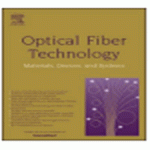توضیحات
ABSTRACT
Driverless cars are seen as one of the key disruptors in the next technology revolution. However, the main barrier to adoption is the lack of public trust. The purpose of this study is to investigate the key factors influencing the adoption of driverless cars. Drawing on quantitative evidence, the study found that the ability of the driverless car to meet performance expectations and its reliability were important adoption determinants. Significant concerns included privacy (autonomy, location tracking and surveillance) and security (from hackers). The paper provides implications for firms developing the next generation of car features and early implementation sites.
INTRODUCTION
The World Health Organization has indicated that 1.2 million people die in accidents each year (WHO, 2015). Driverless cars have been deemed an important technology in reducing a portion of those deaths due to human error (Kyriakidis et al., 2015). A driverless car, otherwise termed a self-driving car or an autonomous car, broadly refers to a robotic vehicle that works without a human operator (Benenson et al., 2008; Paden et al., 2016). More specifically, it can be defined as ‘those in which at least some aspects of a safety-critical control function (e.g. steering, throttle or braking) occur without direct driver input’ (NHTSA, 2013, p. 7). There are various levels of automation of driverless cars and various classification systems exist (the widely adopted SAE standard, the National Highway Traffic Safety Administration (NHTSA) standard and the German Federal Highway Research Institute (BASt) standard). These systems generally encompass five levels of automation from no automation to various levels of partial automation to fully automated (Kyriakidis et al., 2015).Since the Internet and smart phone revolutions, driverless cars have now been deemed as one of the key disruptors in the next technology revolution along with drones and the internet of things and have been recognized as a key area for future research (NHTSA, 2013). Google’s self-driving car has become a hot topic in the media and governments around the world have begun to develop strategies to address the challenges that may result from self-driving vehicles (Schoettle and Sivak, 2014).
چکیده
اتومبیل های بدون راننده به عنوان یکی از ناامید کننده های اصلی در انقلاب تکنولوژی بعدی دیده می شود. با این حال، مانع اصلی پذیرش فقدان اعتماد عمومی است. هدف از این مطالعه بررسی عوامل کلیدی برای پذیرش اتومبیل های بدون راننده است. بر اساس شواهد کمی، مطالعه نشان داد که توانایی ماشین بدون راننده برای برآورده کردن انتظارات عملکرد و قابلیت اطمینان آن، تعیین کننده های پذیرش مهم بودند. نگرانی های مهم شامل حفظ حریم خصوصی (خودمختاری، ردیابی مکان و نظارت) و امنیت (از هکرها). این مقاله مفاهیم را برای شرکت هایی که نسل بعدی ویژگی های خودرو و سایت های اجرایی اولیه را توسعه می دهند، فراهم می کند.
مقدمه
سازمان بهداشت جهانی اعلام کرده است که هر سال 1.2 میلیون نفر در حادثه جان می گیرند (WHO، 2015). خودروهای بدون راننده یک تکنولوژی مهم در کاهش برخی از این مرگ و میر به علت خطای انسانی است (Kyriakidis et al.، 2015). یک ماشین بدون راننده، در غیر این صورت به عنوان یک ماشین خودکار و یا یک ماشین مستقل نامیده می شود، به وسیله وسیله نقلیه روباتیک که بدون یک اپراتور انسان کار می کند (Benenson et al.، 2008؛ Paden et al.، 2016) اشاره می کند. به طور خاص، آن را می توان به عنوان “آنهایی که در آن حداقل برخی از جنبه های یک عملکرد کنترل بحرانی ایمنی (مانند فرمان، گاز یا ترمز) بدون درایور مستقیم ران رخ می دهد” (NHTSA، 2013، ص 7) تعریف شده است. سطوح مختلف اتوماسیون خودروهای بدون راننده وجود دارد و سیستم های طبقه بندی مختلف وجود دارد (استاندارد استاندارد SAE، استانداردهای ایمنی ترافیک ملی (NHTSA) و استاندارد Federal Highway Research Federal (BASt)). این سیستم ها به طور کلی شامل پنج سطح اتوماسیون از هیچ اتوماسیون تا سطوح مختلف اتوماسیون خودکار به طور کامل خودکار (Kyriakidis و همکاران، 2015) شامل نمی شود. از آنجا که اینترنت و انقلاب های تلفن هوشمند، اتومبیل های بدون راننده در حال حاضر به عنوان یکی از دلالان اصلی انقلاب تکنولوژی بعدی همراه با هواپیماهای بدون سرنشین و اینترنت از همه چیز و به عنوان یک زمینه کلیدی برای تحقیقات آینده شناخته شده است (NHTSA، 2013). گوگل خودرو خود را به موضوع داغ در رسانه ها تبدیل شده است و دولت ها در سراسر جهان شروع به توسعه استراتژی های مربوط به چالش هایی که ممکن است ناشی از وسایل نقلیه خود رانندگی (Schoettle و Sivak، 2014).
Year: 2018
Publisher : ELSEVIER
By : Kanwaldeep Kaur, Giselle Rampersad
File Information: English Language/ 10 Page / size: 564 KB
سال : 1397
ناشر : ELSEVIER
کاری از : Kanwaldeep Kaur، Giselle Rampersad
اطلاعات فایل : زبان انگلیسی / 10 صفحه / حجم : KB 564







نقد و بررسیها
هنوز بررسیای ثبت نشده است.